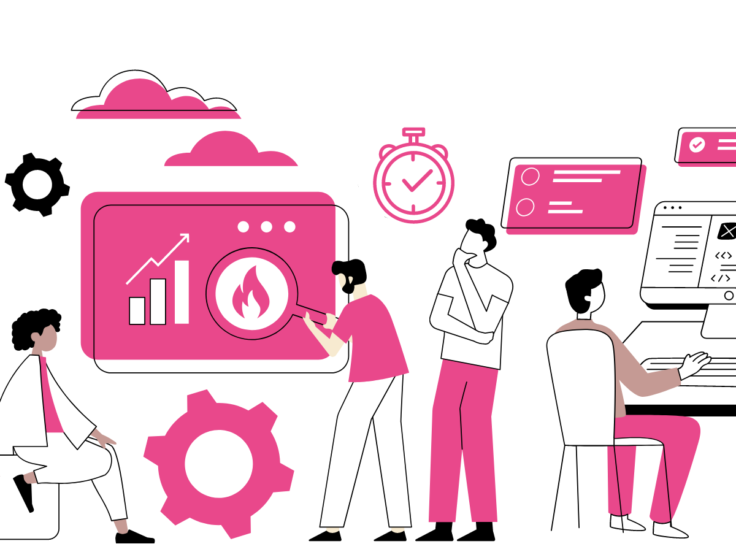A while ago we talked about ways in which project owners can use social media to spread the word about their IndieGoGo campaign. Today we thought we'd take a look at a specific project that did a bang-up job of using social media: Cerise.
The filmmakers on Cerise were able to raise $6,300 — that's $1,300 MORE than their $5,000 goal — thanks to some smart social media tactics. IndieGoGo got some details from project owner John Trigonis on how they pulled it off.
How did you use Facebook to promote your project?
We used Facebook primarily to garner up a following of people who might support the project. We also put to use a technique I call "Friend Fawning," in which we would find out who's online (via the green light on the chat windows) and post a message directly onto each person's wall asking how their day was and then asking them for a donation to CERISE. That technique, although a bit chancy, proved most helpful in collecting some large contributions. Also, we would thank each and every backer who donated to CERISE, and post a personalized poem (one written from their name) on their page as well. This would then start a dialog between us and others people and potential backers as well. And once my team and I set up the "Cerise Movie" page, we used Facebook to update backers and fans about what we're up to on the CERISE front, and still do to this day, by posting video and status updates, trailers and teasers, and coming soon, the official CERISE poster.
How did you use Twitter?
We pretty much used Twitter in the same way we used Facebook. Actually, I started gathering followers and following others a month or so before I even started fundraising, just because I wanted to get to know people with similar interests. This is why at the beginning of our campaign there was a fair amount of traffic to our IndieGoGo page, and a good amount of donations from our then "online" friends, or tweeps (many of whom we've met in person on a few occasions since fund-raising). There were constant tweets about the project, each with a hashtag (#CERISE) so that we could see who was saying what about CERISE.
We also met some very influential people on Twitter who have helped us in more ways than just monetary ones; Ben Gerber, for example, got us the cerisemovie.com domain name and is currently helping us with setting up our website. Also, Serbia-based musician and composer Nino Rajacic found us on IndieGoGo and reached out to us, using Facebook to tell us that he'd like to donate his music. He is now currently writing music for CERISE.
Plus, by retweeting our tweets, our Twitter friends were truly a supportive force for CERISE (not to mention great at marketing the campaign as well!) which we attribute to the fact that we didn't just tweet the same stale messages over and over again; we made each one unique. For instance, and as I mentioned earlier, we used Twitter (and Facebook) to thank each and every backer individually (one of our perks).
What other online techniques did you use to promote your project?
We used the tools available on IndieGoGo to keep in touch with backers, post update videos and photos.
What advice do you have for other project owners on how to successfully integrate their IndieGoGo campaign with their current social media outlets? What was the smartest thing you did? (BTW — the CERISE filmmakers told me this question could be answered best by this blog post they wrote about crowdfunding and indie filmmaking, from which I pulled this quote. For even more insight, check out the post.)
Ask, but don't beg. How often do we go out of our way to give to a homeless person? And when we do, how many times did we believe the story written on their cardboard signs? When we give people sob stories, they give us sympathy, a hug, and an "it’ll be okay" more often than not. So if you need something, stand up tall, look your backers in the eye (metaphorically speaking), and ask for it. There are better ways to grab your potential backers' emotional attention. Begging or asking money in a desperate manner doesn't validate that you are capable of producing a great movie.
The bottom line is your backers, or funders, are in a sense buying into you; they are first and foremost trusting that YOU will make a good film out of the talent and skill that you have. Your attitude will determine the success (or flop) of your campaign.
Also — use the tool, don’t let the tool use you. I'm sure you've heard this many times before and there's a reason why. Tools are made available to us so we can do things easier, faster, and with more convenience. Email was invented so we can transmit our messages in just seconds, but just like in the telegraph days, we still need to do the work and come up with the message. So if your campaign isn't doing well, reread your tweets, revisit your pitch, and reconfigure your objectives. Liz Strauss couldn't have said it any better: "technology doesn't drive anything, people drive things."



You must be logged in to post a comment.